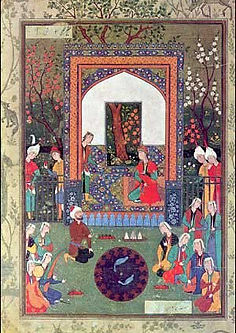A Visual History of Miniature Arts
“In a tiny corner of the art world, painters are sitting at their easels, squinting through magnifying lamps, working with very pointy brushes, to render fine art that you can usually hold in the palm of your hand. A few years ago I stumbled into that corner, and I have not really found my way out of it yet… Not that I’d want to” - Debra Keirce
Miniature art is fine art. Miniature art is a specialty art, not a novelty art. Through the ages it has been considered an art form. Miniature art is most often extremely detailed work, exquisite in color with strength of composition which can more than compete with larger paintings.
Miniature art has a long history spanning a vast geographic area, from the early 5th century Roman Vergil, to 13th century Persian court paintings; from 15th century monastic manuscripts in France, to Elizabethan era pocket portraits.
A miniature usually takes as long or longer to produce as a large piece of art. A fine miniature can be magnified many times and it will still hold together as a fine work of art of much greater size. Most artists can work large, but few have the skill and discipline to work miniature.
Left: Miniature of the Trojan Horse, from the Roman Vergil (early 5th century). Image courtesy of Wikimedia
Right: Tabriz School, "Pandj Gandj", Amir Khosrow Dehlavi (15th century). Image courtesy of Iranchamber.com








